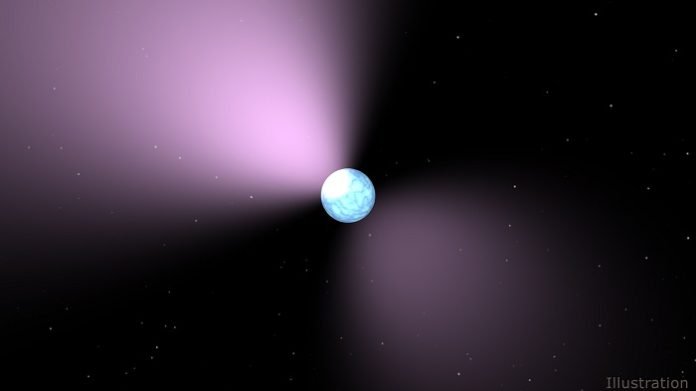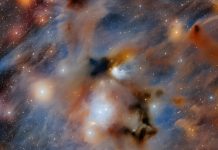
Scientists have made an intriguing discovery in the vast expanse of space, revealing an enigmatic star that defies categorization.
This peculiar celestial object, known as PSR J1119-6127, is shedding light on the fascinating connection between two types of stellar remnants: radio pulsars and magnetars.
Understanding this star’s behavior may hold the key to unraveling the evolution of these cosmic phenomena.
Let’s take a closer look at the two types of neutron stars involved. Neutron stars are incredibly dense remnants left behind after a massive star explodes.
A radio pulsar is a type of neutron star that emits predictable radio waves due to its rapid rotation.
On the other hand, magnetars are notorious troublemakers, unleashing violent bursts of high-energy X-ray and gamma-ray light. In fact, they possess the strongest magnetic fields known in the entire universe.
PSR J1119-6127 has astounded scientists by exhibiting characteristics of both a radio pulsar and a magnetar at different times. It appears that this mysterious neutron star plays a dual role, switching between these two distinct behaviors. This peculiar object, currently being studied, offers a valuable opportunity to delve deeper into the underlying mechanisms that govern pulsars.
Until recently, scientists treated radio pulsars and magnetars as separate entities. However, emerging evidence over the past decade suggests that they could be different stages in the evolution of a single object.
Researchers, including Walid Majid from NASA’s Jet Propulsion Laboratory, believe that PSR J1119-6127 might be in a transitional state never observed before, bridging the gap between radio pulsars and magnetars.
Back in 2000, when this enigmatic object was discovered, it initially appeared to be a radio pulsar, demonstrating a calm and predictable nature.
However, in July 2016, observations from NASA’s Fermi and Swift space observatories detected unusual X-ray bursts and bursts of lower-energy light, indicating rebellious behavior reminiscent of magnetars. These observations prompted further investigations.
Scientists speculate that the twisting of the object’s immense magnetic field during its rotation caused the X-ray bursts. This immense stress on the neutron star’s outer crust, similar to tectonic plates on Earth causing earthquakes, resulted in a sudden change in rotation known as a “glitch.”
The glitch, measured by NASA’s NuSTAR telescope, provided valuable insights into the star’s internal processes.
Neutron stars are incredibly dense, with just one teaspoon weighing as much as a mountain. The outer crust, about 0.6 miles (1 kilometer) thick, consists of a neutron-rich lattice with increasing pressure and density at greater depths. PSR J1119-6127 boasts one of the most potent magnetic fields among known pulsars, trillions of times stronger than the sun’s magnetic field.
Following the X-ray outburst, Majid and colleagues closely monitored the object’s emissions at radio frequencies, which have lower energy than X-rays.
They discovered sharp fluctuations in intensity, allowing them to study the evolution of the emission in detail. The researchers utilized a specialized instrument, informally dubbed a “pulsar machine,” installed at NASA’s Deep Space Network dish in Australia.
Within a mere 10 days, the pulsar’s behavior reverted to that of a typical radio pulsar. The question that remains is which behavior came first: the pulsar or the magnetar? Some scientists propose that objects like PSR J1119-6127 initially exist as magnetars and gradually cease their X-ray and gamma-ray outbursts over time.
Others argue the opposite, suggesting that radio pulsars emerge first, followed by the emergence of a magnetic field from the remnants of a supernova, ultimately leading to magnetar-like outbursts. Much like how babies grow into adults and not the other way around, there is likely a single path these objects take.
To unlock this cosmic mystery, astronomers aim to identify more “missing link” objects like PSR J1119-6127. By monitoring similar celestial entities, scientists hope to determine whether this behavior is unique to this specific star or common among this class of objects. The object of interest, believed to have formed approximately 1,600 years ago following a supernova, continues to be under observation.
Astronomers anticipate discovering additional transitional objects that can provide further insights into this captivating phenomenon.
In their quest to comprehend the universe’s wonders, researchers from NASA’s Jet Propulsion Laboratory and other institutions are tirelessly exploring the astrophysical DNA of neutron stars, ultimately paving the way for groundbreaking discoveries.
With each new finding, we come closer to understanding the intricacies of these celestial entities and our place within the vast cosmos.



